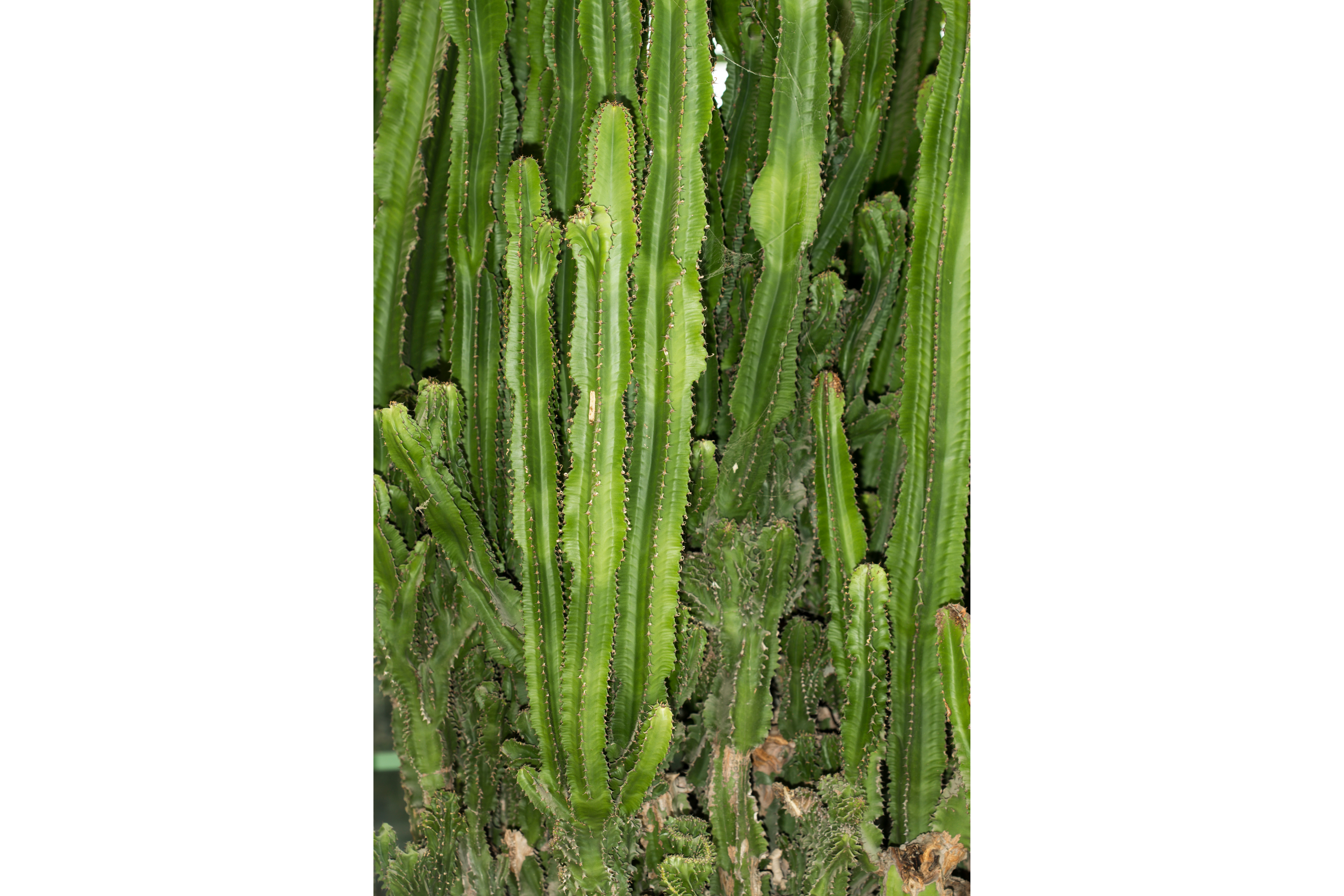Candelabra tree
(Euphorbia ingens)

Description
Euphorbia ingens is a species of flowering plant in the family Euphorbiaceae. It is native to dry areas of southern Africa. It is popularly known as the candelabra tree or naboom, and its milky latex can be extremely poisonous, and a dangerous irritant. This tall succulent tree with green round-like branches resembling a balloon is 6–8 meters tall. Its trunk is thick. Candelabrum stems have 5 ridges each and are 3,5–7,5 centimeters thick. Segmented sprouts are dark-green. Young sprouts have paired spines 0,5–2 millimeters long, often reflected. Small greenish yellow flowers sit on the ridges of the topmost segment. The plant blooms from autumn to winter. A red round 3-lobed capsule fruit turns purple when ripened. The plant occurs in Malawi, Mozambique, Zimbabwe, Zambia, Botswana, Tanzania, South Africa (in the north and east of the country), Rwanda, Uganda, Kenya and Swaziland. It grows on dry lands and semi savannas. It prefers warm regions as it can survive long droughts. It usually roots on rocky outcrops or deep in sand among the bush. The plant’s flowers are attractive for butterflies, bees and other insects, which pollinate them when gathering pollen and nectar. Seeds are edible for birds, who also like to make their nests in the branches of these trees. Particularly woodpeckers often use withered segments for this purpose. The milky latex of the tree is extremely poisonous and can cause blindness, severe skin irritation and poisoning (when ingested) with humans and animals. However when properly used this plant can serve as purgative or drug curing ulcers. Venda and Sotho people even use it as a medicine against cancer. In the South Africa and Zimbabwe candelabra tree stems are also used for fish poisoning. Light and solid, the wood is used in door, plank, and boat production. The plants are annual, biennial or perennial herbs, woody shrubs, or trees with a caustic, poisonous milky latex. The roots are fine or thick and fleshy or tuberous. Many species are more or less succulent, thorny, or unarmed. The main stem and mostly also the side arms of the succulent species are thick and fleshy, 15–91 cm (6–36 in) tall. The deciduous leaves may be opposite, alternate, or in whorls. In succulent species, the leaves are mostly small and short-lived. The stipules are mostly small, partly transformed into spines or glands, or missing.
Taxonomic tree:







